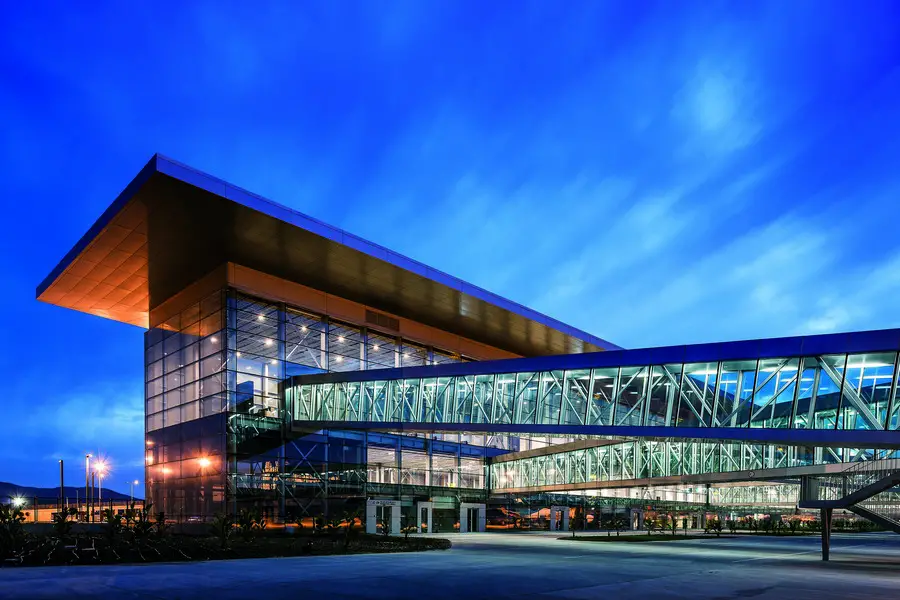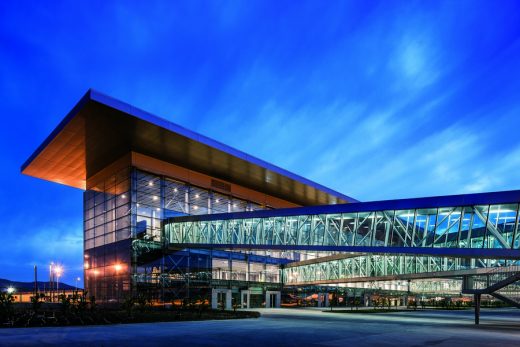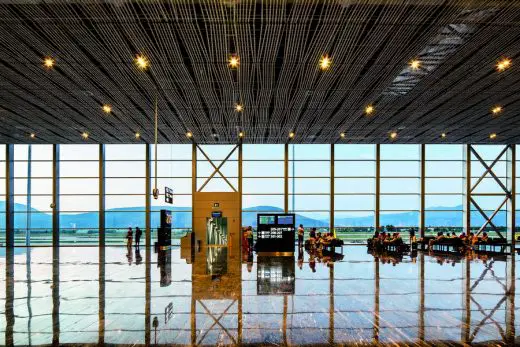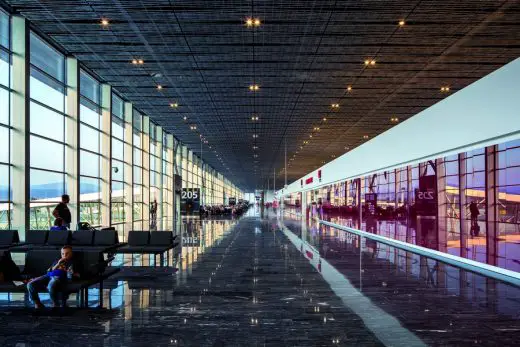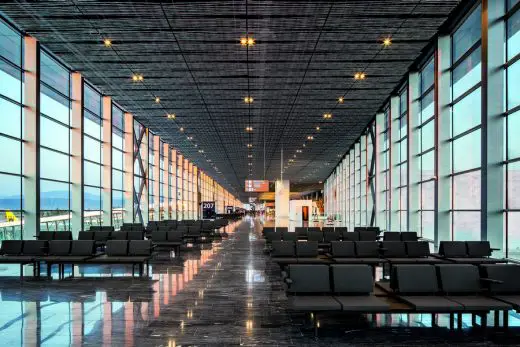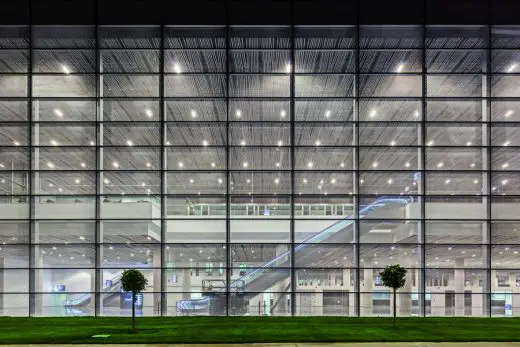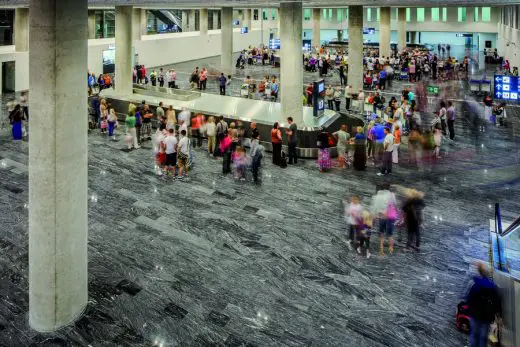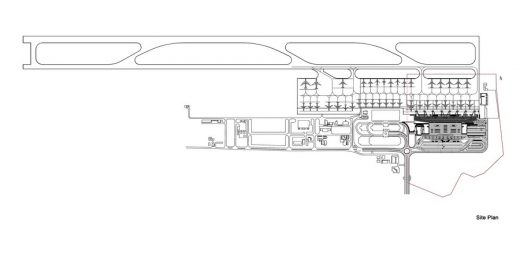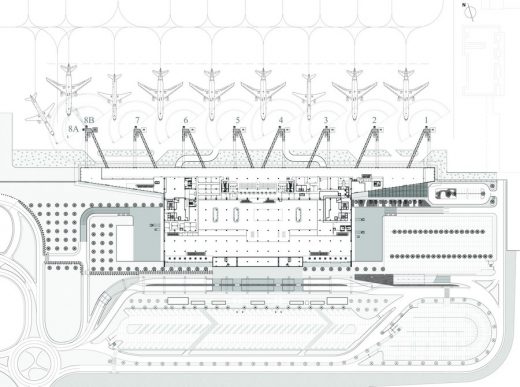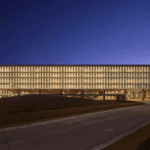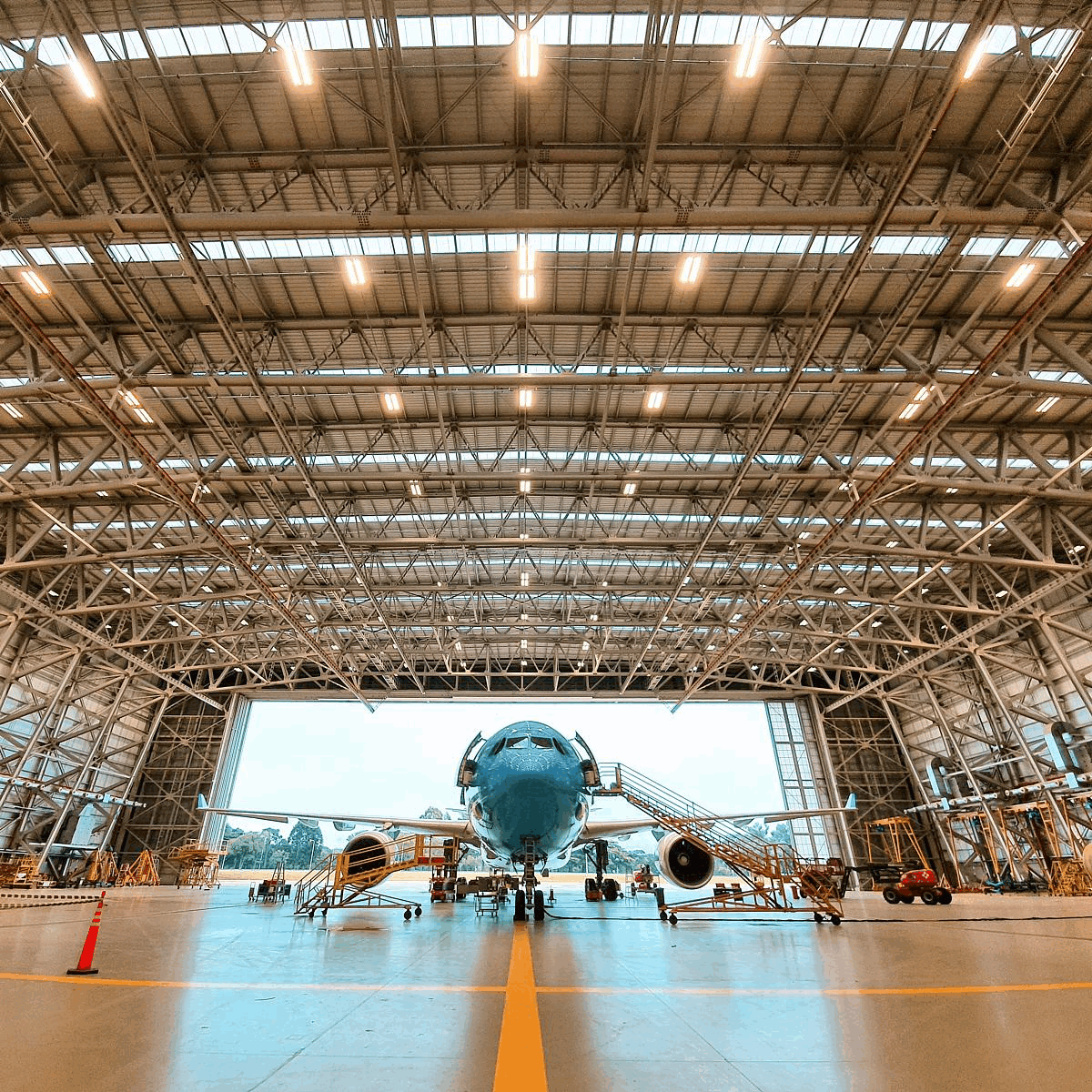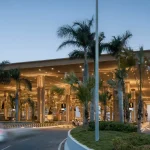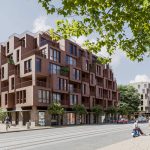Milas Bodrum International Airport building, Turkish terminal complex images, Design competition
Milas Bodrum International Airport Turkey
Air Terminal Building in Turkey design by Tabanlioglu Architects
page updated 11 Nov 2016 with new photos ; 5 Jan 2015
Location: Bodrum, Turkey
Address: Ekinanbarı Köyü, Milas Bodrum Havaalanı Girişi, 48670 Milas/Muğla, Turkey
Phone: +90 252 523 0101
Design: Tabanlioglu Architects
Competition Project – 1st Place Award “1998”
Milas Bodrum International Airport in Turkey
Milas Bodrum International Airport is a transition point between regional effects. The airport is 40km to Bodrum center, 15km to Milas and 8km to Gulluk which is the closest sea coast. The building is located between the present domestic and international terminals, parallel to the apron.
The building consists of two main structures, namely, the “air side”, a transparent glass and steel linear scaffold to which the planes connect and the terminal building at the “land side”. Two structures intersect where the passengers leave the “national” area, emphasizing the passage.
On the south, in the terminal entrance/exit side, partially screen printed sheer glass and opaque glass applied and local natural stone wall in east and west directions of the building.
Thanks to the special extra clear glass use at the north direction of the apron side, overlooking landing and takeoff of aircraft, and the scenery of the meadows up to mountains can be viewed behind the uninterrupted glass, hence a holistic internal-external relation is provided. At south, east and west directions of the air side, the use of serigraphic glass allows daylight in a controlled manner; mild veil effect supports temperature control.
Mechanical systems and storage are at the ground floor; the entrance floor is designed for incoming, and in the upper floor is for departure.
The passengers reach to the departure hall using the viaduct with a direct access from the open car park, and via two towers on the viaduct. Wide column shafts (24 meters) of viaducts grant daylight to diffuse into interiors; wide open scenery rid of columns enables a clean view.
There are meeting desks for incoming passengers, waiting areas, café, WC and kiosks for immediate needs next to the towers; the organization enables the tourist coaches to meet the passengers comfortably.
Composition of secondary elements and finishes create the atmosphere of holidays and soothe the passengers, whereas the primary elements have clear directions and a strong official organization proving easy circulation of passengers within the terminal.
Steel columns, that carry roof trusses and the roof, form the main structure of the building; therefore minimum column use in the interiors provides uninterrupted and spacious areas. Load bearing columns, left as exposed concrete for aesthetic purposes, grant a feeling of safety. The sense of wealth created with minimum use of columns, high ceilings and optimum daylight received through sides and roof in the interiors relieves the tension of journeys even at the most depressing straits such as the security search and passport check points.
The suspended ceiling, designed by Tabanlioglu Architects especially for Bodrum Airport, consists of aluminum rods in the shape of reeds that refer to local sources and weaving loom of the region. Basic motive is derived by the combination of 4 different modules, each weights only 3.5 kg.
Besides the first application process, the light weight of the material facilitates the maintenance process. Texture of the ceiling hides mechanical systems, such as ventilation, electricity, fire sprinklers and lighting. With a reference to Bodrum sea, deep blue reflection behind the slits enriches the 3-dimentional effect. In the terminal, where the net height is 9 meters, natural light diffuses through the 18 light holes filtered through the suspended ceiling.
Besides the ceiling height and the continuity provided by aluminum elements, the use of local black marble (mined and processed in Yatagan, 40 kilometers from site) on the floors increases the effect of continuity and depth in the terminal. The integrity and one-piece impression is enriched by the harmony of material, supported by the natural stone and glass on the exterior façade, as well.
Passenger friendly seats, designed by Tabanlioglu in corporation with Nurus, especially for Bodrum Airport, comfortable for even laying down, placed at all areas; that relax and soothe passengers between flights.
In an air¬port where thou¬sands of vis¬i¬tors takes a in-dept case study of the visual envi¬ron¬ment, design and placement of airport signs & wayfind¬ing sys¬tems guides the travelers stream smoothly.
Four terraces at land and air sides provide passengers the opportunity to be at open air even after controlled entrance to the building.
At building entrance, thanks to double direction circulation provided from the first control point, intensity of the flow is balanced; this scheme enables the administration to keep one wing as a reserve capacity during low season, in order to lower the maintenance and operation cost.
Passengers received into the building through 5 X-Ray devices in one side, and 6 in the other, then directed to 33 check-in counters at each side. Passing through 6 and 3 passport control points at both sides, passengers complete the procedures without being subject to a jam. After police control – transparency and eye contact criteria of EU standards met- passing through X-ray, passenger directly enters the shopping street; Duty-free area and the connected the food section receives natural light filtered through the suspended ceiling.
Incoming baggage receive is made through 3+2, a total of 5 carousels. Thanks to the 6.70 high ceiling, the area is spacious and there is a duty-free at the exit. Beside rent-a-car, bank and kiosks for similar functions at the exit, there is a well-equipped clinic at both arrival and departure, which connects via internal elevator.
In the terminal which hosts 8 bridges, one of the bridges serve with double blowers that enable connection of large airliners. Accessing the terminal and aircraft by the glass bridges, the passengers pass over a green landscape arranged with banana and olive trees, daphnia and paper flower, all favorable for Bodrum climate.
In order to keep clear and simple the roof arrangement, which can be watched from the flowing traffic coming from Bodrum and also from the air, the mechanical systems placed in the basement store, therefore the night effect of roof lights are enhanced.
The CIP area will be leased to serve as “General Aviation Terminal” to be used by businessmen coming to Bodrum with their private aircraft.
Following completion of the new building, the existing international terminal will start serving for domestic flights, and the old domestic terminal will be pulled down and the site will serve as private jet park.
Capacity of the airport, which was 1.5 million passengers per year, increased to 8 million, and 5 million passengers are expected at the first stage.
There is an open park area with a capacity of 114 buses and 426 cars, of which a large part is reserved for tour buses meeting passengers as the airport generally receives charter flights.
Bodrum International Airport is planned in the most effective fashion in terms of technical infrastructure as a mechanical structure; the use of local materials supports the environmental harmony of the structure and made the construction feasible and facilitated the construction process.
Defined as “non-place” according to Marc Augé, the terminal building is one of the most typical examples of standard spaces you can see all around the world. Although such buildings are accepted to be the embodiment of globalization and super-modernity, Bodrum Airport aims to get rid of the pressure and monotony created by compulsory standards and becomes a special spot, not only for travel, but also significant to the region it connects.
Milas Bodrum International Airport – Building Information
Competition Project, 1998 (1st Prize)
Client: General Directorate of State Airports Authority
Architectural Team: Melkan Gürsel & Murat Tabanlıoğlu, Şeyda Arguner, Ümit Kalpaklı, Erkan Nazlı, Çağman Tepetaş, Sunay Yusuf.
Engineers / Consultants
Consultant: Chris Owen
Engineering: Arup Türkiye
Development and realization stage: 2010 – 2012
Client: Astaldi S.p.A.
Architectural Team: Melkan Gürsel & Murat Tabanlıoğlu, Murat Cengiz, Sibel Akyüz, Selçuk Başkaya, Taner Berber, Aslin Ersan, Ayşe Yalçın İçyer, Alper Kaynakçı, Tülin Köri, Umut Köklü, Başak Uysal Ökçün, Cenk Özden, Derin Özken, Seray Öztürk, Ayşe Sevig, Sinem Saka, Korhan Sargıner, Melis Selis, Selcen Tuncer, Durul Üçer, Melih Vahidimarian
Engineers / Consultants for Development and realization
Structural: Emir
Mechanical: METTA GMD
Electrical: Yurdakul
Infrastructure: Sigal
Facade: Emmer Pfenninger Partner AG
Fire: Etik
Arch. Lighting: Studio Dinnebier
Landscape: DS
Main Contractor: Astaldi S.p.A
Usable Area: 100,700 sqm
Site Area: 455,000 sqm
Photographs: Murat Germen
Milas Bodrum International Airport in Turkey image / information from Tabanlioglu Architects
Location: Ekinanbarı Köyü, Milas Bodrum Havaalanı Girişi, 48670 Milas/Muğla, Turkey
TAV Istanbul Ataturk Airport
Design: GMW Architects
TAV Istanbul Ataturk Airport
Turkish Architecture – Selection
Istanbul Airport Terminal Complex lead design : Grimshaw Architects
Turkish Buildings
Nikki Beach Resort & Spa Bodrum, Torba, Bodrum, south west Turkey
Design: Global Architectural Development – GAD
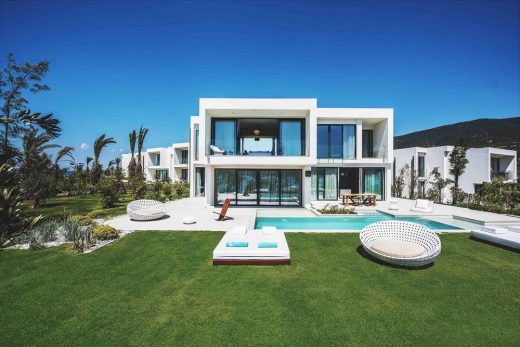
photograph : Daniel Schäfer
Nikki Beach Resort & Spa Bodrum
Izmir Transportation Hub, Izmir, Aegean Coast, Western Turkey
Design: Eray Carbajo
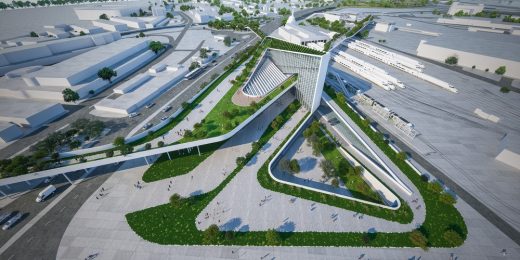
image courtesy of architects
Izmir Transportation Hub in Western Turkey
Comments / photos for the Milas Bodrum International Airport in Turkey Architecture design by Tabanlioglu Architects page welcome

